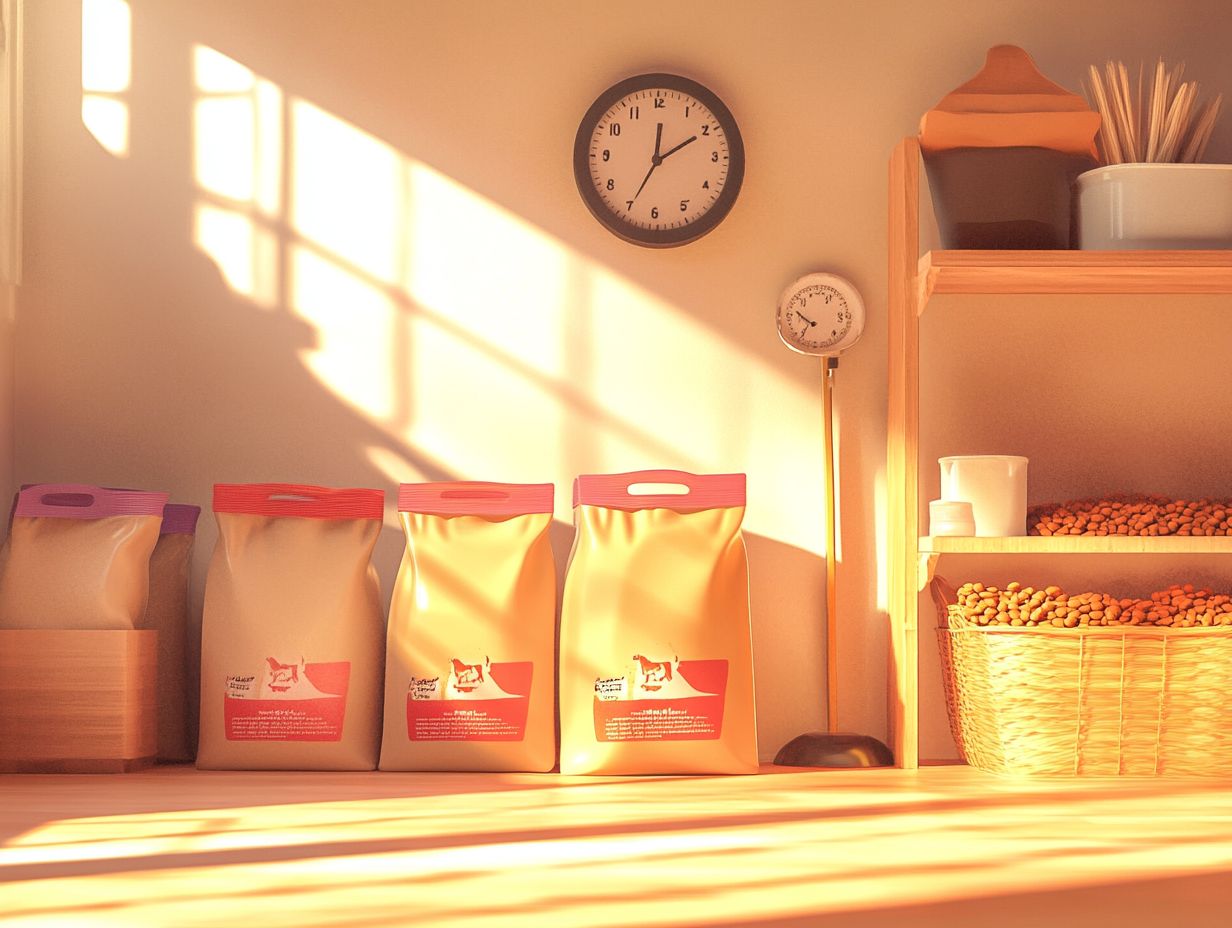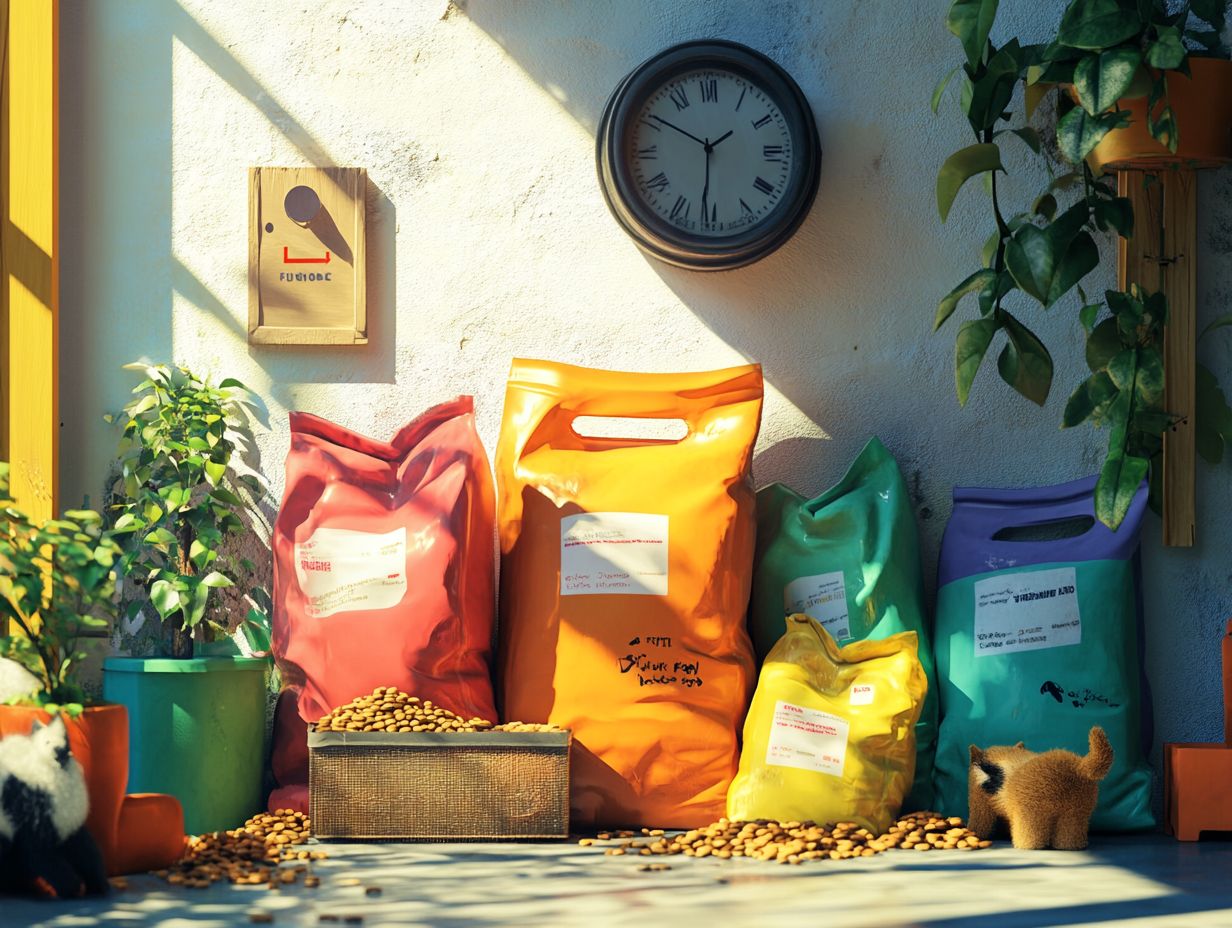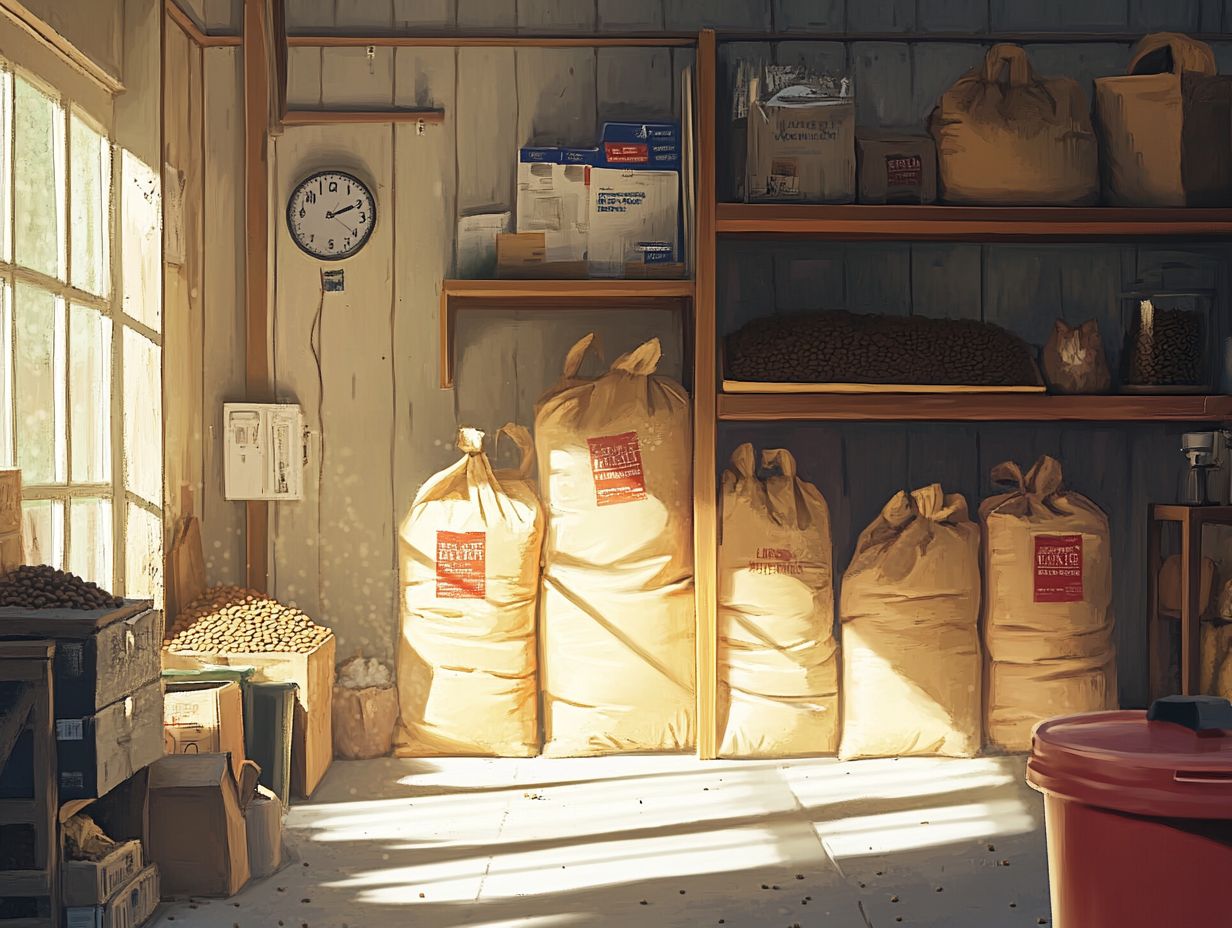Properly storing cat food is crucial for ensuring your feline friends receive the best nutrition possible, which is fundamental to their dietary needs. According to the Association of American Feed Control Officials (AAFCO) and the World Small Animal Veterinary Association (WSAVA), proper food storage can greatly affect nutrient retention.
Temperature, influenced by climate and environmental factors, plays a significant role in maintaining the quality and safety of their meals. High temperatures can accelerate the breakdown of essential nutrients, while low temperatures may decrease the bioavailability of those nutrients.
This article explores the ideal storage temperatures, how heat and cold influence nutrient content, and how to spot spoiled food—all essential aspects for maintaining high-quality cat food. Additionally, practical tips on choosing the right containers and storage methods tailored to your climate, including recommendations from leading pet supplement brands, will be shared.
Your cat’s health starts with proper food storage—read on to learn how!
Key Takeaways:

- Storing cat food at the ideal temperature is crucial for its longevity.
- Temperature can affect the nutritional value of cat food, both at high and low temperatures, impacting the digestibility of nutrients.
- Signs of spoiled cat food include changes in texture, odor, and appearance. Feeding spoiled food to your cat can pose serious health risks.
What is the Ideal Temperature for Storing Cat Food?
The ideal temperature for storing cat food is essential for maintaining its quality and meeting the nutritional needs of cats. Storage temperature affects the moisture content, nutrient digestibility, and caloric density of food products, especially for senior or special-needs cats.
Proper temperature control can enhance the health span of pets, a concern particularly important for senior cat owners who understand the aging process at the cellular level.
What Factors Affect Cat Food Storage Temperature?
Environmental factors such as climate temperature and the physical activity level of a household can significantly affect the storage temperature of cat food. Being aware of these factors enables cat owners to ensure that their cat food is stored properly, remaining fresh and safe for consumption.
For instance, changes in humidity can lead to kibble absorbing moisture, which may result in mold growth or nutrient degradation. Extreme heat can accelerate these processes, diminishing essential vitamins. Conversely, storing food at excessively low temperatures can alter its texture, potentially making it less appealing.
What is the Shelf Life of Cat Food at Different Temperatures?
The shelf life of cat food varies significantly depending on the storage temperature; higher temperatures generally shorten shelf life due to the accelerated degradation of nutrients. Understanding how temperature affects cat food longevity is essential for cat owners seeking to meet their pets’ dietary needs effectively.
Dry cat food typically has a shelf life of 12 to 18 months when stored at room temperature. In contrast, unopened wet cat food can last 2 to 5 years, but once opened, it should be consumed within a few days and must be refrigerated. Research indicates that storing cat food in cooler environments, ideally below 75°F, helps maximize its quality and nutritional value.
How Does Temperature Affect the Nutritional Value of Cat Food?
Temperature plays a significant role in the nutritional value of cat food. Exposure to excessively high or low temperatures can adversely affect the caloric density and overall nutrient profile of cat food.
Understanding how temperature influences these aspects is essential when feeding pets specific diets tailored to meet their metabolic health needs.
What Nutritional Deficiencies Can Arise from Poor Cat Food Storage?
Poor food storage can lead to specific nutritional deficiencies in cats, such as loss of essential vitamins and fatty acids. For example, a decline in taurine levels can cause serious health issues, including cardiac and visual problems.
Special Dietary Needs for Cats
Cats with specific health conditions require precise dietary management. Proper food storage is essential to maintain the efficacy of their specialized diets, as nutrient loss can exacerbate these conditions. Animal-source proteins are crucial for all cats as obligate carnivores, providing the essential amino acids necessary for their health.
Recommendations for Cat Food Storage
According to AAFCO and WSAVA guidelines, cat food should be stored in a cool, dry place, ideally in airtight containers to prevent contamination and maintain freshness. High temperatures can alter the nutrient content of cat food, leading to degradation of essential vitamins and minerals.
Veterinary nutritionists emphasize the dangers of feeding compromised food, as deficiencies can lead to long-term health issues. For more information, you can read about the impact of temperature on pet food longevity.
Does Low Temperature Affect the Nutrient Content of Cat Food?
Low temperatures can impact the nutrient content of cat food, though the effects are not as pronounced as those caused by high temperatures. Understanding how low temperatures affect cat food can help pet owners make informed choices that promote their pets’ health and longevity.
What Are the Signs of Spoiled Cat Food?
It is essential for cat owners to recognize the signs of spoiled cat food, as consuming spoiled food can pose serious health risks to cats. Regularly checking expiration dates and inspecting for unusual odors or discoloration can help minimize risks.
How Does Temperature Affect the Growth of Bacteria in Cat Food?
Temperature plays a crucial role in the growth of bacteria in cat food. When cat food is stored at temperatures above 70°F, harmful bacteria can thrive, posing health risks. It is essential for cat owners to store cat food in cool, dry places, ideally below 50°F for long-term preservation.
What are the Dangers of Feeding Your Cat Spoiled Food?
Feeding cats spoiled food can lead to gastrointestinal upset, metabolic diseases, and long-term health complications. Spoiled food can harbor harmful bacteria, which can lead to symptoms like vomiting and diarrhea.
Unique Dietary Needs of Senior Cats
Senior cats often have higher levels of animal-source proteins in their diets to support muscle maintenance and lower fat content to prevent obesity. Consultation with a veterinary professional for tailored dietary recommendations is crucial.
Proper Food Storage and Handling Practices for Cat Food
To prevent spoilage and maintain nutrient integrity, cat owners should store cat food in a cool, dry place, avoiding exposure to temperature fluctuations.
How to Properly Store Cat Food to Maintain Temperature?

Proper storage of cat food is essential for maintaining the right temperature and ensuring that the food remains safe and nutritious for cats.
What Containers are Best for Storing Cat Food?
The use of proper containers for storing cat food aids in preserving the food and maintaining optimal storage conditions. High-quality, airtight containers protect cat food from moisture, pests, and temperature fluctuations.
BPA-free plastic is recommended to prevent harmful chemicals from leaching into the food. Regular cleaning and ensuring containers are thoroughly dried afterward can prevent mold growth.
How to Store Dry Cat Food in Hot Climates?
Tips for Storing Dry Cat Food in Hot Climates:
- Choose an Appropriate Location: Avoid storing cat food in places like garden sheds or garages. Instead, opt for an indoor location that remains cool during the day.
- Select an Airtight Container: Use the original packaging if resealable or transfer the food to an airtight container.
- Utilize Silica Gel Packets: These can significantly lower humidity levels, helping to maintain freshness.
- Monitor for Spoilage: Regularly check for signs of spoilage.
How to Store Wet Cat Food in Cold Climates?
Storing wet cat food in cold climates requires airtight and insulated storage solutions. Regularly checking expiration dates and following a proper feeding schedule can ensure that wet food remains safe.
Finally, be aware of toxic foods like onions and garlic. Proper storage and monitoring can help prevent spoilage.
Frequently Asked Questions
What is the ideal temperature for storing pet food?

The ideal temperature for storing pet food is between 50-80 degrees Fahrenheit, helping to maintain freshness and nutritional value.
Why is it important to understand temperature’s impact on pet food longevity?
Temperature plays a crucial role in pet food longevity as it affects nutritional value and overall quality. Understanding this impact can help ensure your pet receives the best nutrition possible.
How does temperature affect the shelf life of pet food?
High temperatures can accelerate nutrient breakdown, leading to a shorter shelf life. Conversely, low temperatures can help prolong it.
Can I store pet food in the refrigerator or freezer?
It is not recommended to store pet food in the refrigerator or freezer as moisture can lead to spoilage.
What are the potential risks of storing pet food in high temperatures?
High temperatures increase the risk of bacterial growth and contamination, which can be harmful to your pet’s health.
How can I ensure my pet’s food stays fresh and nutritious?
Store it in a cool, dry place away from direct sunlight and heat sources. Follow expiration dates and check for signs of spoilage.